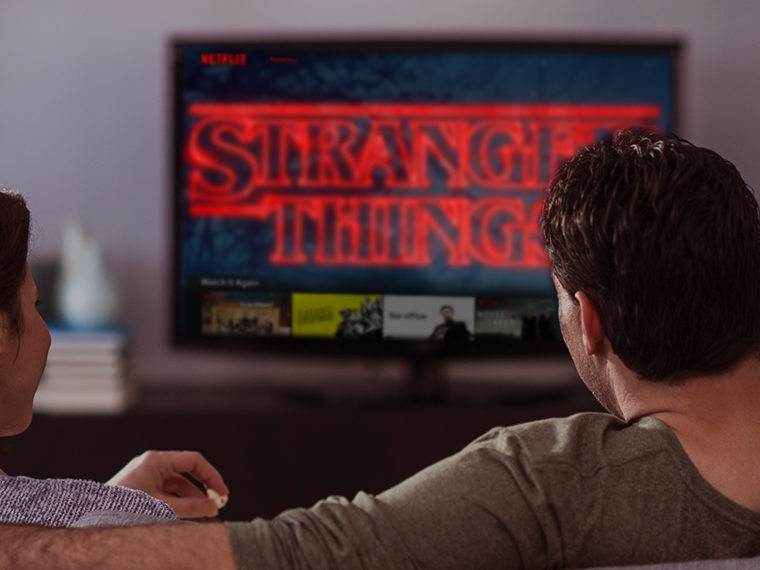Third-party sellers would gain; consumers might pay more but increase control of products display
Echoing the sentiments of some antitrust critics of Amazon and other online platforms, UCLA Anderson’s H. Tai Lam suggests in a working paper that consumer search results on Amazon be split in two — one view exclusively for the products sold by small businesses on the platform, the other view showing Amazon’s products.
The proposal stops short of the goal of some Amazon critics: Force it to be either a platform for other sellers or a merchant of its own goods, but not both. Lam’s working paper suggests we put in consumers’ hands a choice of viewing the large product variety that third-party sellers bring to the platform or the smaller number of mass market products Amazon sells.
The bifurcation would benefit third-party sellers, which currently have to compete against the very company that chooses which products are displayed most prominently, Lam’s analysis suggests. But he warns in the paper that the complex pricing model currently in use on Amazon might then result in higher prices on popular third-party goods.
Antitrust law has traditionally focused narrowly on prices customers pay, seeking to prevent a company from accumulating market power that allows it to raise prices above competitive levels. Amazon — and to a certain extent, other online platforms — presents an additional concern for antitrust regulators: Does its market power — operating both a platform for other sellers and its own products in competition — disadvantage those third-party merchants?
“Elements of the firm’s structure and conduct pose anti-competitive concerns — yet it has escaped antitrust scrutiny,” Lina M. Khan warned in an influential 2017 Yale Law Review article, four years before she became the Biden administration’s Federal Trade Commission chair.
Location, Location, Location
Amazon’s market power materializes through product placement. You’ll often find that the products gracing the top of your search results are, in fact, those sold by Amazon. The company expertly steers your search journey by highlighting particular products in prominent spots, while pushing others into the bowels of the search results. This phenomenon isn’t unique to Amazon; other platforms employ the same strategy. The U.S. congressional panel hearing on “Online Platforms and Market Power” describes the situation as, “a handful of gatekeepers have come to capture control over key arteries of online commerce.”
Lam suggests that the position of products in search results has a significant impact on how firms price their products and how they compete with other sellers in the marketplace. That’s because consumers with different product preferences and price thresholds spend varying amounts of time searching through the results. Shoppers in a hurry are more likely to select a product featured on the first page of the results, and this product is more likely to be sold by Amazon.
The shoppers who can afford the time or value certain product features will dig deeper into the search results. In the end, products at the top of the search results face fewer competitors when consumers stop searching after a few pages, while those at the bottom face a larger pool of competitors and a smaller set of consumers willing to search that deep into the results.
While product diversity can be an advantage for some sellers, many online platforms have multiple sellers offering the same product, often at similar prices. Lam suggests this is where another feature of Amazon’s search results design makes a difference. Amazon’s solution is the BuyBox feature, which groups all sellers of the same product together and defaults to showing the seller with the lowest price to the shopper. This differs from a platform like eBay that shows a separate result for each seller of the same product. Amazon’s design creates pricing pressure and incentivizes sellers to offer lower prices to win the coveted position as the default seller.
Supporting Small Businesses Comes at a Price
Lam built a computer model of the Amazon marketplace using this understanding of how position in the search results creates demand and impacts pricing. For the model, he developed a method to simulate consumers’ search and buying behavior and sellers’ pricing adjustments in response to changing product arrangements in search results. The simulated consumers valued variety, had various price thresholds and limited their search effort to different degrees. Lam suggests that the impact of market power imbalances can be observed by examining the pricing outcomes when product arrangements are changed.
To conduct his simulations, Lam scraped data from Amazon.com for the top-selling products in 58 “Home & Kitchen” categories. These included toasters, air fryers, humidifiers and bathroom scales. Amazon shows only a subset of products to shoppers and that subset can vary by who’s searching and when they are searching.
That said, a quick, unscientific search at the time of this writing showed 320 toasters for sale and 57% of them on the first page were sold by Amazon. Within the middle of the search results about one-third of the toasters were offered by Amazon and this fell to 20% on the final pages of the results. A search for bathroom scales returned roughly 385 products and included many more third-party sellers. On the first page of the search results, Amazon offered 40% of the products and by the middle of the results it accounted for less than 20% of the products offered.
In the first step of his study, Lam leveled the playing field by removing Amazon products’ position advantage in search results. As a result, he found that profits shifted from Amazon to the third-party sellers. While this strengthens the argument that Amazon’s current search design provides the company with market power, there was also an unexpected finding — his study suggests consumers were worse off when Amazon’s position advantage was neutralized.
Prices for third-party products rose as they took advantage of the new market power that came with better search result positions. An additional reason for the price rise is that the variety of products increased and products were no longer easily substitutable for one another. Overall consumer welfare was harmed due to the higher prices when Amazon’s product positions were neutralized. This suggests that, under the company’s current pricing model, Amazon’s incentive to better place its products in search results and consumers’ preferences are aligned — potentially weakening any antitrust arguments.
Thus, Lam suggests that consumers simply be given the option to “support small businesses” by splitting the search results in two.
Amazon, it should be noted, does offer a small business-only product search — if you know where to go looking for it. After you’ve searched for toasters, say, along the lefthand side of the results are all sorts of modifiers to your search: customer reviews; brands; price ranges; and several more categories; and finally, “Business Type: Small Business.” By the time you get down there, your eyes have also seen a handful of toasters. Not quite the clearly split results Lam is seeking.
Under his approach, consumers who value Amazon mass-market products are not harmed and consumers that value the product variety offered by third-party sellers can more easily access those products.
Featured Faculty
-
H. Tai Lam
Assistant Professor of Marketing
About the Research
Lam, H. T. (2022). Platform search design and market power.






